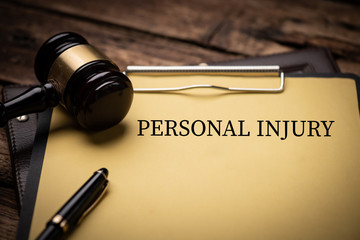Personal injury cases involve an injured person (the plaintiff) suing someone else (the defendant) for damages. Most often, these cases are based on negligent or reckless behavior.
Other common types of personal injury cases include premises liability, which holds property owners responsible for keeping their premises safe and warning visitors of any dangers.

Car Accidents
Car accidents can be caused by a variety of factors, including distracted driving, speeding, and reckless driving. In most cases, however, car accidents are caused by negligence. If you’ve been injured in a car accident due to someone else’s carelessness, you may be entitled to compensation for your injuries.
In personal injury lawsuits, the claimant is called the “plaintiff,” and the person or entity allegedly responsible for the accident is known as the “defendant.” A successful personal injury case revolves around proving that the defendant failed to act with ordinary care and consideration. To determine whether someone acted negligently, legal authorities ask four questions: duty, breach, causation, and damages.
A qualified lawyer will assist the plaintiff by identifying all of the relevant expenses and losses. These include medical bills, lost wages, property damage, and pain and suffering. In some instances, a lawyer might call on expert resources such as vocational rehabilitation specialists, life-care planners, and economists to paint a more comprehensive picture of the victim’s total damages. The attorney will also protect the client’s rights if the other party attempts to shift blame for the accident. They will provide clear, compelling evidence to defuse any false accusations and to demonstrate that the victim’s injury was directly related to the crash. They will also offer sound guidance on when to negotiate and when to consider taking the matter to trial.
Workplace Accidents
Workplace accidents can be caused by a variety of factors. While some may seem inadvertent or unavoidable, others could have been prevented by proper safety measures. If you’re injured in the workplace, it’s important to consult with a tenacious attorney as soon as possible to ensure that your legal rights are protected.
Generally, to file a personal injury lawsuit, you must demonstrate that the responsible party failed to meet their standard of care in some way and that this breach directly led to your injuries. There are four elements to prove negligence: duty, breach, causation, and damages. To recover compensatory damages, you can receive payment for your medical expenses (past and future), lost wages, property damage, and non-economic damages such as pain and suffering.
However, there are a number of legal defenses that can be used to protect the defendant from liability. For example, if the injured party was trespassing on the property of the defendant, then they may not be entitled to compensation. Furthermore, the law allows for a defense called assumption of risk. This occurs when the injured party willingly assumes certain risks and dangers associated with their job, such as working in hazardous conditions. Additionally, some types of accidents, such as those involving defective products or certain animal bites, can be subject to strict liability.
Product Liability
Product liability is a broad legal concept that holds manufacturers and sellers liable for injuries caused by defective products. It also encourages businesses to prioritize consumer safety during the design, manufacturing, and distribution processes. Injured consumers can seek compensation to cover medical expenses, lost income, and other losses.
While the majority of product liability claims are based on negligence, some are premised on breach of warranty or strict liability. For a claim to be successful, injured parties must establish four basic elements:
Breach of warranty claims are based on contracts and require privity between the injured party and the seller. This means that the injured party must have purchased or used the product from the original manufacturer or a person who directly resold it. The law offers several methods to determine whether or not the contract was breached, including a risk-utility test and a consumer expectation test.
Strict liability does not rely on negligence, making it a less complicated option for injured parties to pursue compensation. However, injured parties must still prove that the product was defective when it left the manufacturer’s control and caused their injury.
Defendants often attempt to disprove the plaintiff’s claims by arguing that the product was not defective, the injury was caused by misuse, or that they assumed the risks associated with using the product. This is why it is important for injured individuals to consult with an attorney to determine which theory of liability may be appropriate for their case.
Pedestrian Accidents
When people on foot enter the roadways, they do so with a high degree of risk. When struck by a motor vehicle, they can suffer extensive injuries that may require lengthy treatment and significant financial burdens. Pedestrian accidents can also cause fatalities, leaving families struggling to cope.
Whether you have been injured in a pedestrian accident or are searching for a legal representative to represent your loved one, it is essential to understand the key concepts of personal injury law. The most basic legal theory that applies to these cases is negligence. Negligence is the failure to exercise reasonable care when entering into a situation that involves danger and harm to others. A skilled pedestrian accident attorney will be able to explain the various forms of negligence and how they can apply to specific circumstances.
When a pedestrian is involved in an accident with a vehicle, it is important to prove that the driver breached their duty of care. Common examples of breaches include texting and driving, failing to yield at crosswalks, and speeding. Depending on the case, it may be necessary to prove causation and damages. Damages often include medical expenses, lost income, and pain and suffering. In some states, comparative negligence rules apply, meaning a pedestrian can recover damages even if they are found to be partially at fault for the accident.